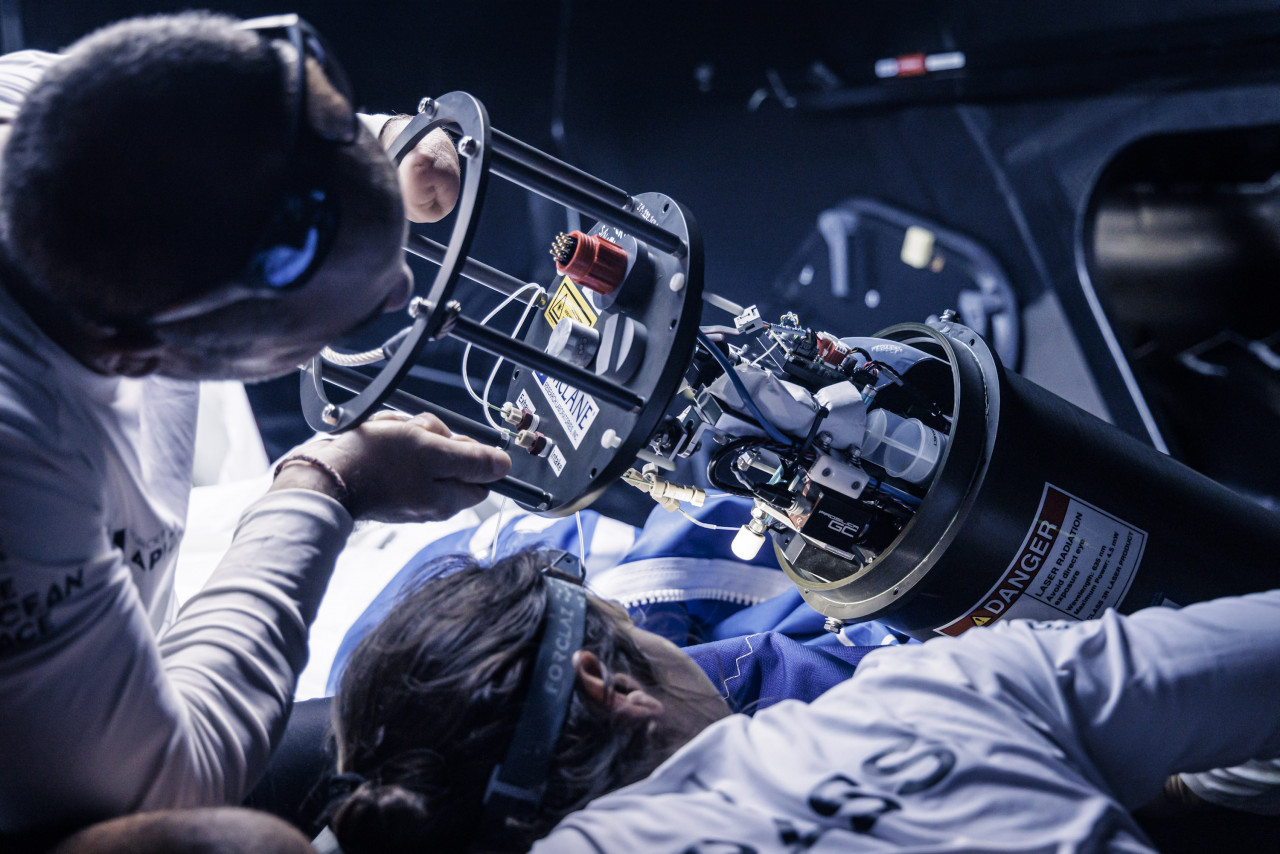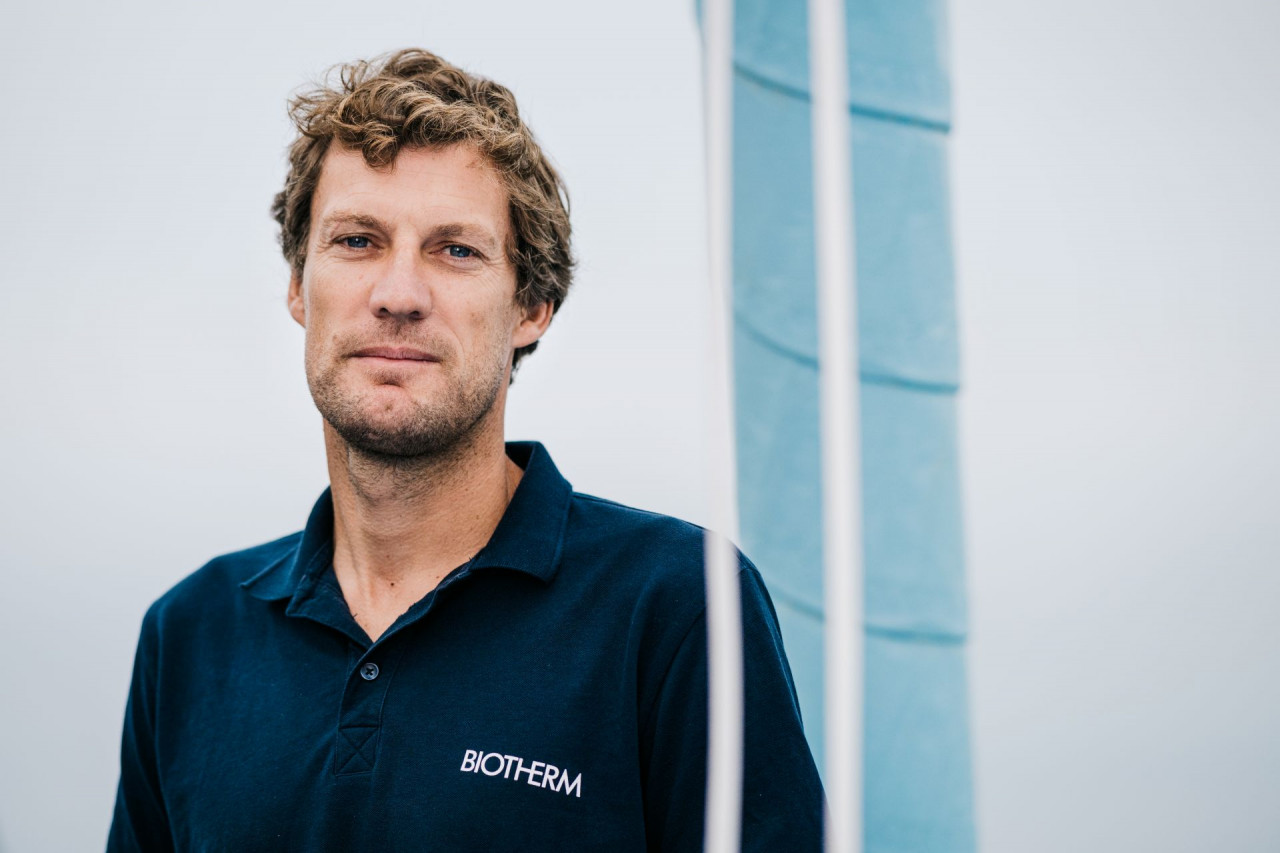Biotherm and Paul Meilhat are joining forces with the Tara Ocean Foundation to study ocean biodiversity

Biotherm and Paul Meilhat announce a joint research project with the Tara Ocean Foundation as the racing team takes on The Ocean Race in 2023. Each leg of the race will become a data collection opportunity as experimental sensors onboard the Biotherm IMOCA will capture key information about phytoplankton and the health of our ocean.
Phytoplankton support all life in the ocean and play an important role in the ocean’s ability to capture carbon and regulate Earth’s climate, which is why this research is so crucial. The Biotherm IMOCA will collect data on phytoplankton in compliment to Tara Ocean Foundation by traveling in places that the research vessel cannot, notably during the race’s historic Southern Ocean leg during the 2022/2023 edition.
To achieve this challenging mission, scientific partners of the Tara Ocean Foundation and sailors from the Biotherm Racing team are installing a novel state-of-the- art automated microscope aboard the Biotherm IMOCA: an Imaging FlowCytobot (IFCB). The device combines flow cytometry and video technology to capture high resolution images of microscopic particles such as phytoplankton in aquatic environments. In short, the Imaging FlowCytobot will behave as an automated microscope: it will take small samples of water from understudied parts of the ocean to create geolocalized datasets of microscopic marine life. This will join Tara’s ongoing research efforts and contribute to understanding the future of the health of our ocean. The Tara Ocean Foundation has had an IFCB deployed aboard its research vessel (Tara) since 2013.
 © anne beauge
© anne beauge
The data collected during The Ocean Race will be shared with Tara Ocean Foundation and its research partners including CNRS, Sorbonne University, the University of Washington and beyond to support their ongoing studies. This project will contribute to the United Nations Sustainability Development Goal (SDG) 14: Conserve and sustainably use the oceans, seas and marine resources for sustainable development. Moreover, it aligns with The Ocean Race’s vision of using sport to be a catalyst for change and accelerate the protection and restoration of the ocean via the organization’s Racing with Purpose program.
“Biotherm comes from water and we want to give back to it. Understanding the ocean is the first step in order to help protect it. Our racing program with Paul Meilhat is a part of our commitment to the ocean; beyond racing and raising awareness about the importance of ocean preservation, we want to have a tangible impact in protecting its future. The Ocean Race’s mission of Racing with Purpose inspires us to do the same. We are thankful to longtime partners Romain Troublé and the team at Tara Ocean Foundation for helping us craft this project from day one,”says Gregory Benoit, Biotherm Global Brand President.
 © © anne Beaugé
© © anne Beaugé
AN AUTOMATED PHYTOPLANKTON MICROSCOPE ONBOARD BIOTHERM
It is estimated that phytoplankton absorb more than 25% of all CO2 produced by humans every year.1 Understanding the impact of climate change on these microorganisms is fundamental to understand how to build resilience in the face of future climate changes. However, researchers’ ability to study the diversity of phytoplankton in the open ocean is limited by lack of data in the high seas.
The Imaging FlowCytobot, deployed on the vessel Tara and now aboard the Biotherm IMOCA, provides unique quantitative information regarding what plankton are in the surface ocean. The device captures high resolution images of microscopic particles (like phytoplankton) by using laser-induced fluorescence and light scattering from individual particles to identify the presence of phytoplankton in a sample, and then generate an image with a camera aligned with the flow of the sample.
 © anne beauge
© anne beauge
Depending on the phytoplankton density in a given area, the device can produce up to 30,000 high resolution images per hour, effectively helping researchers access extremely clear images of microscopic ocean life.
The device weighs approximately 40kg and will be integrated in the Biotherm IMOCA in order to collect data automatically during The Ocean Race starting in January 2023. The implementation of such a technological sensor is, of course, challenging but it shall not require intervention from the sailing team during the races.
MAPPING THE FUTURE OF OCEAN BIODIVERSITY RESEARCH
Beyond researching local biodiversity, the data collected by Biotherm will help Tara Ocean Foundation and their research partners to devise new algorithms to study phytoplankton diversity from developing space-based satellites. In the future, these developing research methods will help us gain significantly more information on the properties of the marine biodiversity in the upper ocean than what is available today.
As an example, some phytoplankton (diatoms) form large blooms and play important roles in marine food webs and the carbon cycle. However, direct measurement of their biomass in the ocean is challenging and time consuming. Thus, researchers often rely on bulk measurements of ocean color to approximate the size of this diatom biomass. However, ocean color-based methods require widespread ocean data for their development and to check results determined from satellites.
Voir cette publication sur Instagram
“This project will help our global understanding of the carbon budget in the context of climate change. We believe there is a strong difference between what we estimate from space data today, and what we actually measure in the upper ocean. With the research project we are implementing onto the Biotherm IMOCA, we will be able to compare color- based estimates of diatom carbon from satellites to direct measurements obtained via the Imaging FlowCytobot on Biotherm. This information on biodiversity in the high seas and remote areas of our ocean will complement those collected on Tara. In the context of The Ocean Race, this is particularly helpful as Paul Meilhat and the crew onboard Biotherm will be sailing in the Southern Ocean where Tara and other research vessels have limited experience,” explains Romain Troublé, Executive Director of the Tara Ocean Foundation and scientific coordinator for the Biotherm IMOCA project.
This is the first step in a years-long project of implementing low-energy sensors on the Biotherm IMOCA that will continue until the brand competes in the 2024 Vendée Globe.
 © Jean-Louis Carli
© Jean-Louis Carli
PAUL MEILHAT: BALANCING PERFORMANCE AND PURPOSE FOR THE OCEAN RACE
Over the years Paul Meilhat has become an actor, promoter and protector of his environment. In 2010, Paul started organizing beach cleanups with the NGO Surfrider Foundation Europe (Biotherm’s NGO partner for their Ocean Initiatives citizen cleanup program since 2020). In 2020, Paul launched the “Echappée Bleue” (Blue Escape) operation with Surfrider Foundation Europe to introduce sailing to children who have never had the opportunity and some of whom have never even seen the sea. It is important for the skipper that any project he works on finds a balance between performance and purpose.
“From the beginning, we agreed that the Biotherm Racing program has to be about more than sailing. We both want to win, but we also want to have a bigger societal impact. We want to make people more aware of the issues facing our ocean today. As a sailor, you see the impact of climate change firsthand. The Ocean Race is the perfect moment for us to launch this research project as the race has put sustainability at its core,” says Paul Meilhat, skipper of the Biotherm IMOCA.
In constructing this project together, Meilhat and Biotherm were inspired by Biotherm’s longtime NGO partner Tara Ocean Foundation. Tara is a state-of-the-art scientific research vessel built for extreme conditions, measuring 36 meters long and weighing over 140 tons. The ship is fitted with dozens of high-tech sensors and in its latest Mission Microbiomes produced over 25 000 research samples from its 2-year journey around the world.

It is a challenge to integrate research projects onto racing vessels like IMOCA that are built for speed. These vessels essentially “fly” at top speeds on their foils, making it difficult to have sensitive scientific equipment onboard due to strong impacts as they hit the water.
“We know that implementing this research project on the Biotherm IMOCA can have an impact on our performance, but it’s non-negotiable for us. When you use the ocean, you understand the need to preserve and regenerate it. I am a sailor, not a scientist. But I see that there is something here that we have to understand. To protect something, you must first understand it,” says Meilhat.
Teams info
After a stunning 2025 season Sam Goodchild is the IMOCA Globe Series Champion for the second time
After a long season at the top of the IMOCA fleet that featured three race wins, Great Britain’s Sam Goodchild is for the second time in three years the IMOCA Globe Series Champion.
•••Quel rôle peut jouer la course au large dans la transformation du transport international ? Avec Pie…
Pour ce 10ᵉ épisode de Transitions, enregistré au Havre lors du départ de la Transat Café L'Or, nous recevons Jeremy Pochman, PDG de 11th Hour Racing, et Pierre-Antoine Morvan, responsable du pôle course au large et supe…
•••